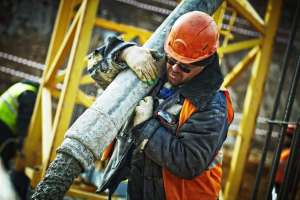Considering the different stages of production, stakeholders must be aware of disruptive innovations to get a competitive edge over their competitors.
Componentized Building Manufacture with Digital Enhancements
Industrialized production is on the rise, and the movement is spreading, thanks to a greater focus on the economy and quicker building processes. Most construction duties are moved away from the job site and assigned to a plant in the industrialized method. The pre-configured building elements and components are then transported to the project site and put together.
This technique aids in the resolution of construction issues such as timely delivery, commercial feasibility, reliability, and environmental protection.
3D Print
3D printing, commonly known as additive production, involves digitally layering elements to build three-dimensional items from a digital image. It has developed into a natural match for the sector, adaptable to a wide range of materials and offering nearly endless design flexibility. Printing pipework, connections, tools, cement, walls with incorporated MEP equipment, and roofing tiles are all-new options.
Physical Robots
In the construction business, robots allow tough physical projects to be done with little human interaction is getting more common. Techniques to automate specific trades have been extensively developed.
Bricklaying, soldering, and cement pouring are all done with robotics. Construction efficiency, accuracy, reduced human work, and increased safety from speed bumps are the benefits of using robots to undertake traditional human labor. Examinations play a critical role in production, thanks to automation facilitated by data.
Examinations
The construction project undergoes a series of examinations to comprehend different data sources about the ground, drains, flora, and more before a structure is constructed.
Many more checks are required as the building process begins to guarantee worker safety, legality, integrity, productivity, and other vital data points. All of these examinations are primarily manual, time-consuming, or sometimes hazardous in conventional buildings. Consider the dangers of examining timbers on the 32nd level of a construction site.
Examinations Done by Drones
Drones are increasingly being used to speed up the inspection process. They can explore a large region in a short amount of time. They have improved cameras that can take precise, close-up photos and communicate real-time data to computer networks and smart machines that can respond to the information obtained by them.
Getting digital information from drones has numerous advantages. One significant advantage is that the information allows builders to do pre-construction models, enabling them to evaluate theories, plans and reduce the chance of error before starting construction.
Another advantage is the ability to do building operations remotely and without human intervention.
Automated Software
Whether in commercial properties, clinics, or industries, the arrangement of building modules is critical to meeting architectural intent. From improving the pace at which teams arrange walls and ceilings to offering a more exact building project that meets BIM Coordination, robotic plan technologies that connect the model design to the site.
The Long-Run Effect
Building companies are increasingly racing to become paperless in the hopes of increasing profit while fighting with competitors. Overall, construction firms fear that anyone who does not use digital technology will be forced to close down.
Furthermore, most people believe that digitization will boost production, increase delivery time, and aid in meeting sustainability goals.
Even minerals science has altered as a result of technological advancements. Building workers, for example, may now pick self-leveling or self-healing cement over traditional concrete that cracks, pits, and flakes over time.
Permeable concrete is available, which enables water to flow rather than pool. You may learn about electronic document management, 3D printing, and more with the team.
Conclusion
Humans are in the early phases of the building business being affected. Because of the rapid pace of invention in a range of technologies, construction sector leaders have been able to use technology to drastically alter business strategies for creating huge houses and buildings.
Robots, cloud computing, algorithms, 3D printing, and automation are some of the disruptive technologies.
Read more: The Future of the Construction Industry Needs to Embrace These 4 Things











